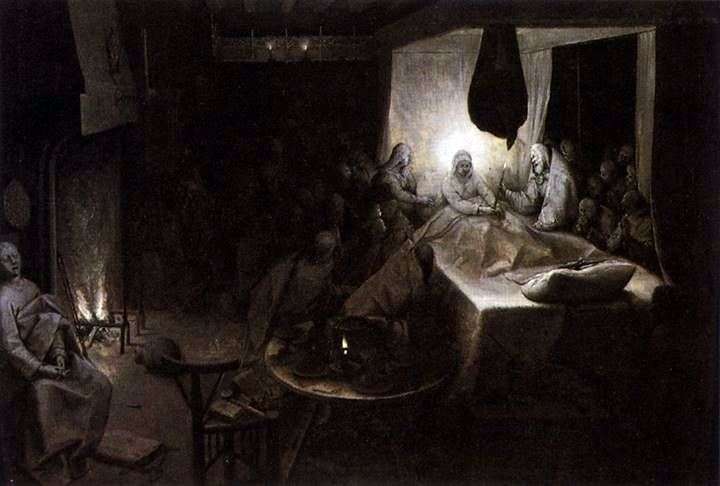
This painting Bruegel wrote for his close friend, Abraham Ortelius, and he was so shocked by her that he asked Philip Halle to make an engraving from this work, which later adorned the hall of general meetings of the religious society “The Family of Love.” It is curious that later the painting became the property of Rubens, who was a big fan of the Bruegelian genius. The composition of the picture is very unusual.
The mortal bed of the Mother of God is not surrounded here by the twelve apostles, as indicated in the apocrypha; present – much more. This gives grounds to assume that the source for Bruegel was not the apocryphal text of John the Theologian, but the “Golden Legend”, in which the witnesses of the death of the Virgin were, besides the apostles, other disciples of Christ, as well as Christian martyrs miraculously transferred to the deathbed of the most diverse corners of the world.
According to the Dutch tradition, the scene is shown in a modern artist’s setting. All household items are written quite realistically. There is a metal hot-water bottle on the wall, a cat curled up at the fire, and on the table on the left are pitchers, plates and a lamp.
The Virgin, departing into eternal life, is illuminated behind by the mystical light that came here from the apocrypha, which tells about the appearance of Christ at this moment in the form of “the light emanating from Him and poured out over the Mother of God.” The seeming ghostly and unreal figure on the left belongs to John the Theologian, the author of an apocryphal account of the Assumption of the Virgin.
The holy apostle Peter, clothed in episcopal robes and personifying the church created by Christ, puts a lit candle in the hands of a dying person. The Crucifixion, lying before the Mother of God, convinces us that even in her mortal moment She does not cease to think of her crucified Son.
 The Assumption of the Virgin Mary by Andrea Mantegna
The Assumption of the Virgin Mary by Andrea Mantegna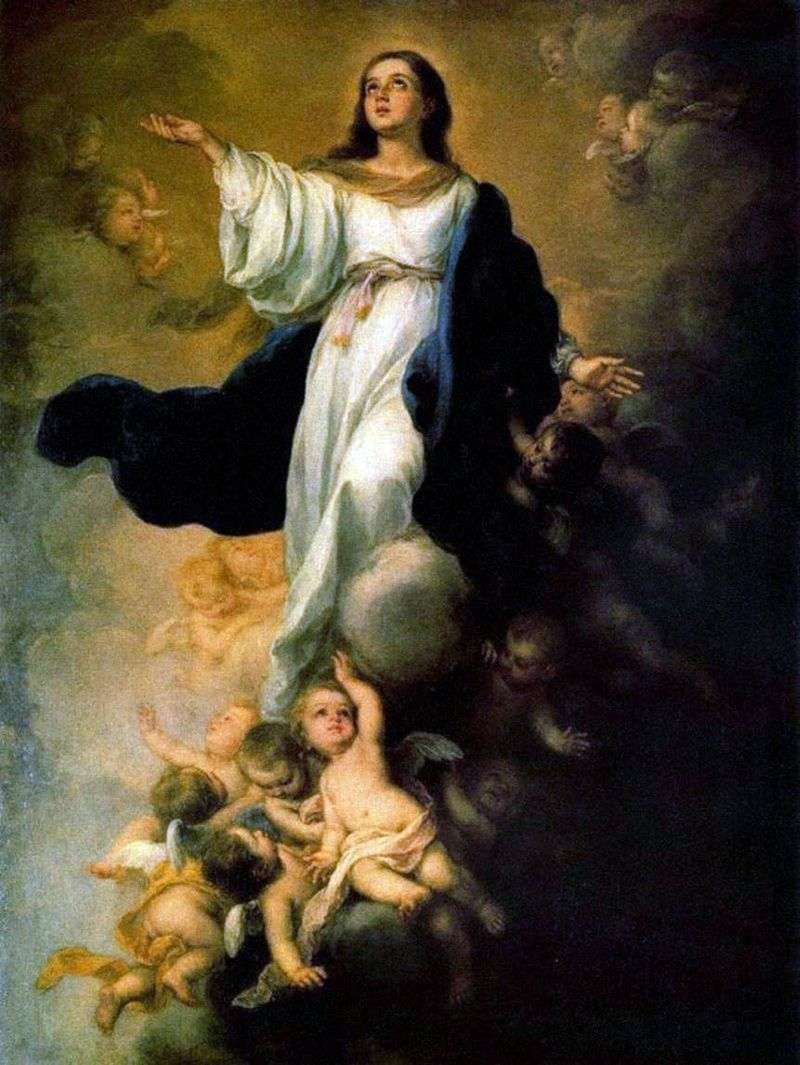 Assumption of the Virgin Mary by Bartolome Esteban Murillo
Assumption of the Virgin Mary by Bartolome Esteban Murillo The Assumption of Our Lady
The Assumption of Our Lady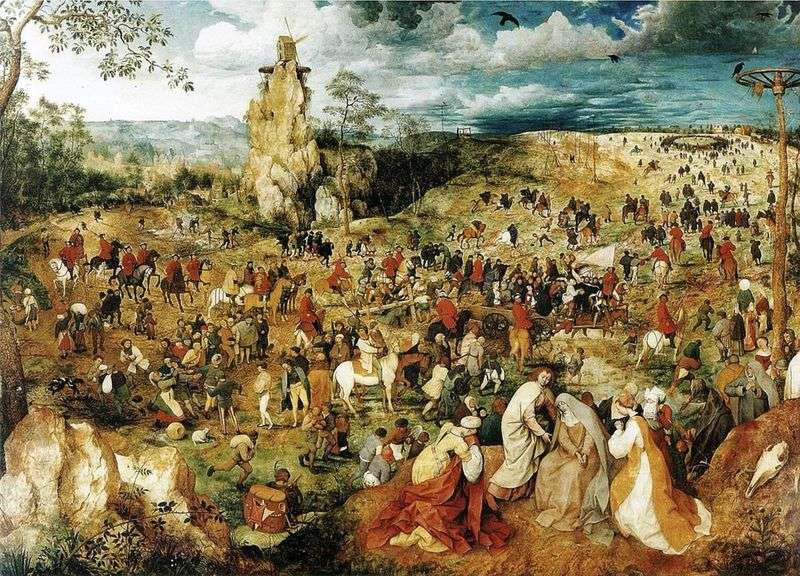 The Way to Calvary by Peter Brueghel
The Way to Calvary by Peter Brueghel Introduction to the Temple of the Blessed Virgin by Paolo Uccello
Introduction to the Temple of the Blessed Virgin by Paolo Uccello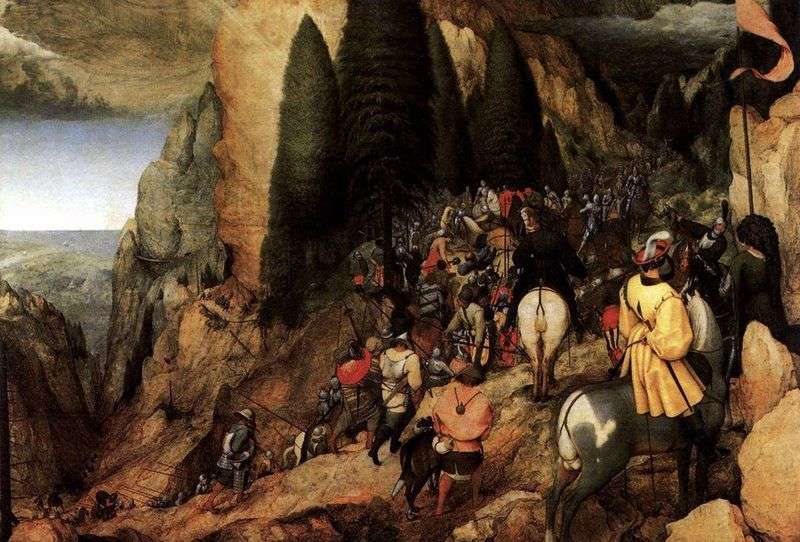 The Conversion of Saul by Peter Brueghel
The Conversion of Saul by Peter Brueghel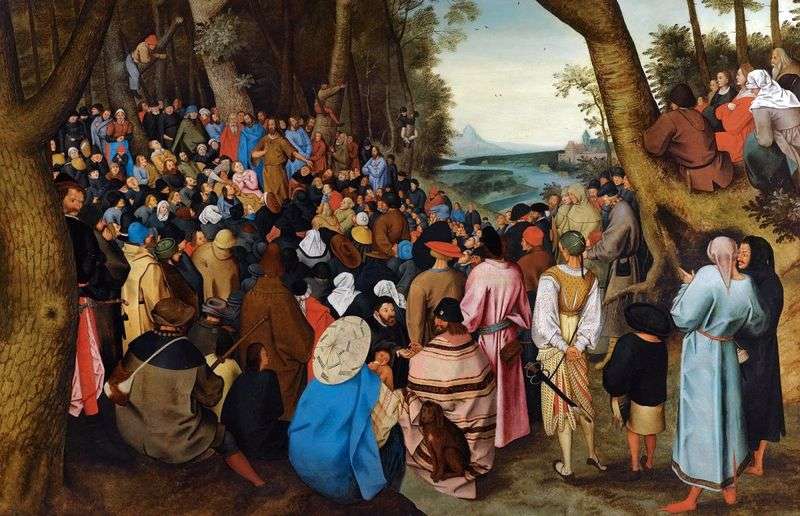 The preaching of John the Baptist by Peter Brueghel
The preaching of John the Baptist by Peter Brueghel Assumption of the Virgin by El Greco
Assumption of the Virgin by El Greco